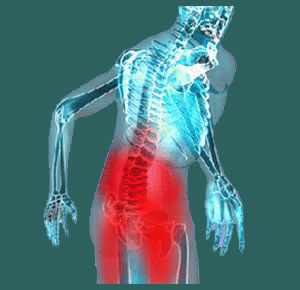
Sacroiliac and piriformis pain are often confused for one another, since they can produce similar symptoms. However, there are important differences in their causation, symptomatic activity and treatment recommendations. The sacroiliac joint and piriformis muscle are located very close to each other anatomically and also share close interactions with the sciatic nerve, making them both able to produce pain in the same regions of the body.
This article explains the diagnostic challenges of differentiating sacroiliac symptoms from piriformis syndrome and other piriformis-related pathologies. We will also detail rare cases where a patient might express both piriformis and sacroiliac symptoms simultaneously.
Sacroiliac and Piriformis Pain Diagnostic Problems
The piriformis muscle actually spans across the sacroiliac joint, since it attaches at the sacrum and the femur. This places the piriformis muscle in direct proximity to the sacroiliac joint, as well as in close relative position to the sciatic nerve. When pain is produced locally, or within the sciatic nerve, the sacroiliac and piriformis might both be investigated as being the direct source.
Since definitive evidence of pathology in the piriformis and SIJ are both rare, the diagnostic theory will often settle on implicating one or the other as the source of symptoms. However, this verdict often turns out to be incorrect and misguided, guiding the patient into unnecessary and possibly dangerous treatment for a completely innocent condition.
Of course, doctors often also figure lumbar spinal and hip joint pathologies into the mix of potential causes of symptomatic complaints. Being that lumbar structural atypicalities are virtually universal in all adults, and since hip degeneration is virtually universal in people past middle age, these factors can further confound diagnostic efforts and create the ideal circumstances for mistaken diagnostic processing.
Sacroiliac and Piriformis Symptom Differences
Sacroiliac pain can mimic injury to the piriformis muscle in many expressions. The location of the pain will be similar, but the range of movement that triggers more intense symptoms will often highlight the piriformis as the true source in particular circumstances.
Sacroiliac laxity and piriformis muscle imbalances are also common in their expressed symptomology in certain patients, creating the possibility for diagnostic error during functional testing.
Finally, pseudo-sciatica can originate from interactions between the sacroiliac and the sciatic nerve, as well as from piriformis-enacted compression of this same nerve. Statistically, sacroiliac pseudo-sciatica usually is limited to the buttocks and upper leg, while piriformis syndrome can create symptoms the entire length of the sciatic nerve. However, neither of these citations are rules which are written in stone.
Sacroiliac and Piriformis Pain Together
In very rare circumstances, a specific patient might demonstrate both sacroiliac joint issues and piriformis pain problems simultaneously. These events often truly confiscate matters, since treatment might resolve one problem, yet symptoms of the other remain, typically leading care providers off course in trying to ascertain the reason for therapeutic failure.
Virtually any SIJ diagnosis can be present along with virtually any piriformis muscle condition. However, in some instances, the occurrence of both types of pain might be linked to the same source process, such as in the illustrative examples detailed below:
Imbalances in the piriformis muscle can change stance and gait, potentially escalating degenerative processes in the SIJ. Similarly, a painful sacroiliac might cause imbalance or increase the chance of injury in the piriformis.
If the sacroiliac is found to be contributing to compression of the sciatic nerve, the constriction can actually cause the piriformis to spasm due to innervation concerns, since the muscle is innervated by S1 and S2. These nerve roots are 2 of the 5 which compose the sciatic nerve.
A hyper-lax or hyper-tight sacroiliac can cause laxity or tension in the piriformis muscle, since this muscle does attach to the sacrum, as well.
Sacroiliac Joint Pain > Sacroiliac Pain > Sacroiliac and Piriformis Pain





